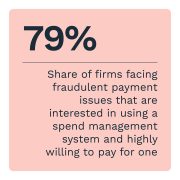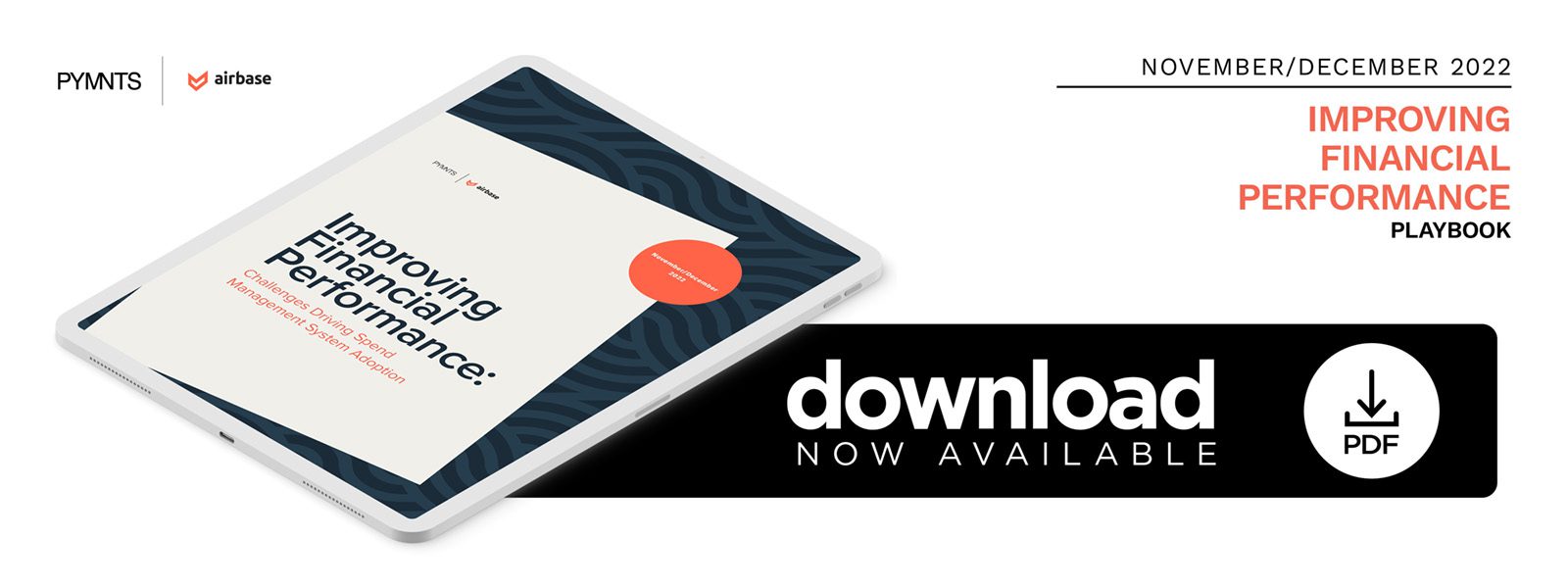Spend Management Headaches Push SaaS Firms to Automated Systems

 Software-as-a-service (SaaS) solution providers experience a bevy of challenges when managing their non-payroll spending. For one, these firms too often rely on time-consuming, inefficient manual processes to manage this spend, which includes suppliers’ invoices and employees’ expenses, leading to delays impacting critical parties. Another flaw of manual entry is its propensity for mistakes: Data entry errors remain the top challenge cited by the SaaS firm executives surveyed.
Software-as-a-service (SaaS) solution providers experience a bevy of challenges when managing their non-payroll spending. For one, these firms too often rely on time-consuming, inefficient manual processes to manage this spend, which includes suppliers’ invoices and employees’ expenses, leading to delays impacting critical parties. Another flaw of manual entry is its propensity for mistakes: Data entry errors remain the top challenge cited by the SaaS firm executives surveyed.
In addition, one-third of executives surveyed report that fraudulent payments, lost receipts and lacking access to real-time data are key challenges when managing non-payroll spend.
PYMNTS’ data also shows that an alternative system that streamlines how SaaS firms manage this spend is not merely an object of interest — many are willing to pay for these solutions. According to our data, 64% of SaaS firms that do not use an alternative system say they are highly interested in one, while 90% of interested firms are at least somewhat willing to pay for a spend management system.
“Improving Financial Performance: Challenges Driving Spend Management System Adoption,” a PYMNTS and Airbase collaboration, explores the biggest challenges SaaS firms face and how these challenges drive SaaS firms’ willingness to adopt and pay for a non-payroll spend management system. We surveyed 225 executives with deep knowledge of and leadership responsibilities in AP departments at SaaS companies with 100 to 1,500 employees between May 18 and June 6 to explore the ways an automated system can streamline non-payroll spend management and improve financial performance.
 More key findings from the study include:
More key findings from the study include:
• More than one-third of firms report having difficulties accessing real-time data, and firms facing this challenge are the most interested in adopting such a system. Thirty-six percent of all SaaS firms cited a lack of real-time data as a challenge when managing non-payroll spending. Smaller firms are most likely to report having this challenge, at 41%. Among firms that do not use a spend management system, 40% cite difficulties accessing real-time data, exceeding the 32% of firms using such a system that cite the same issue. Nearly all firms that report having difficulties accessing real-time data are at least slightly interested in using a spend management system, with 76% of these firms very or extremely willing to pay for it.
• Fraudulent payments are a key challenge in managing non-payroll spend for more than one-third of SaaS firms, with firms that face this challenge among the most interested in using a spend management system. While 37% of all SaaS firms surveyed report dealing with fraudulent payments when managing non-payroll spending, smaller firms and those that do not use a system have it worse. Forty-nine percent of small firms cited fraudulent payments as a challenge, as did 48% of firms that do not use a non-payroll spend management system. Among firms grappling with fraudulent payments, 96% are at least slightly interested in using a spend management system, with 79% of these firms very or extremely willing to pay for one.
• Close to one-third of firms surveyed have experienced problems with lost expense receipts, yet firms facing this challenge are among the least interested in investing in a spend management system. While 32% of all SaaS firms cite lost expense receipts as a key challenge, this issue is more problematic for larger firms than for smaller ones: 37% of larger firms cited this challenge, and only 28% of smaller firms did so. Among firms facing this challenge, 90% are at least slightly interested in a spend management system. A significant share of these firms are very or extremely willing to pay for one, however, at 62%.
To learn more about what challenges drive SaaS solution provider to a non-payroll spend management system, download the report.
